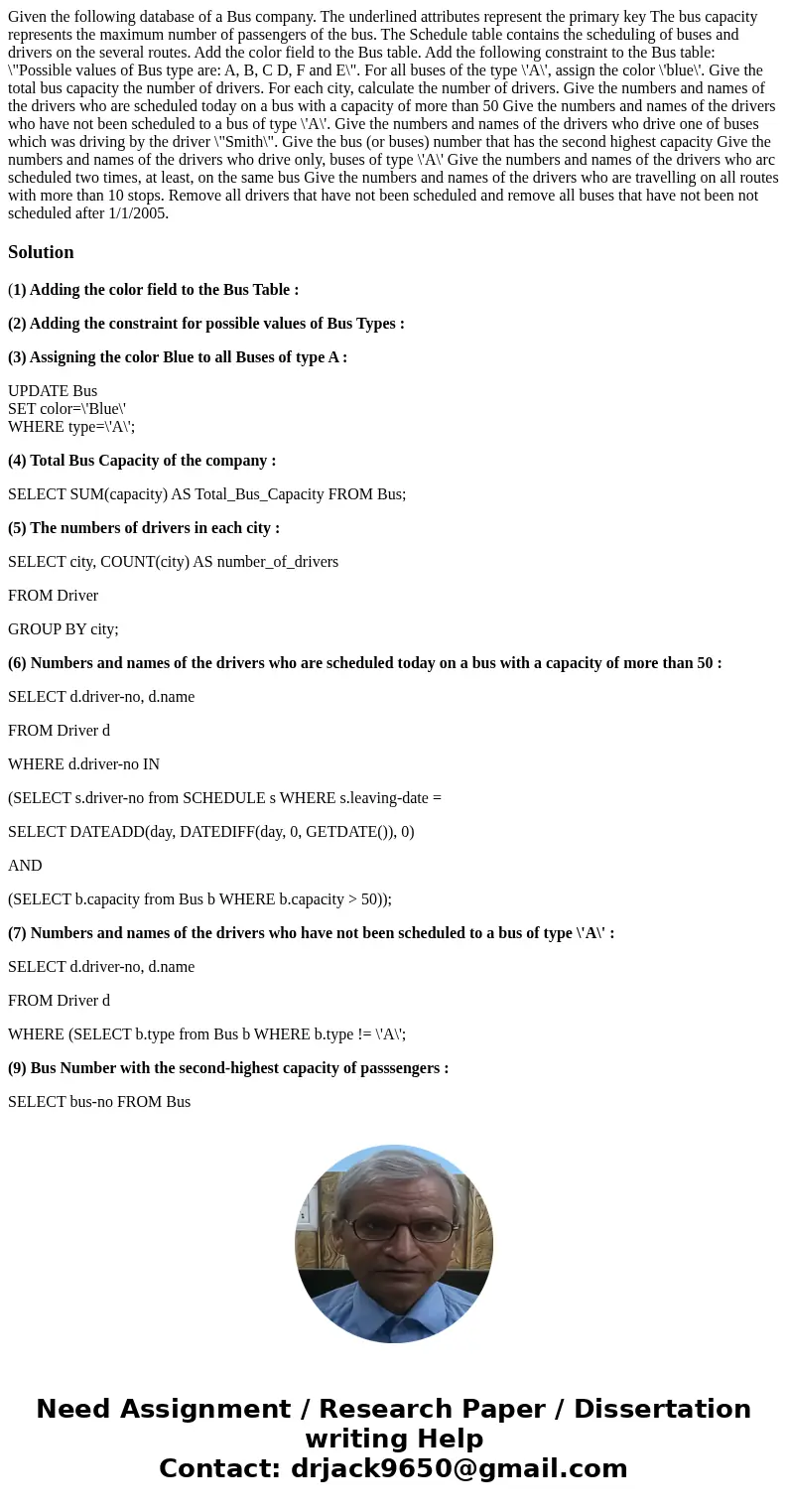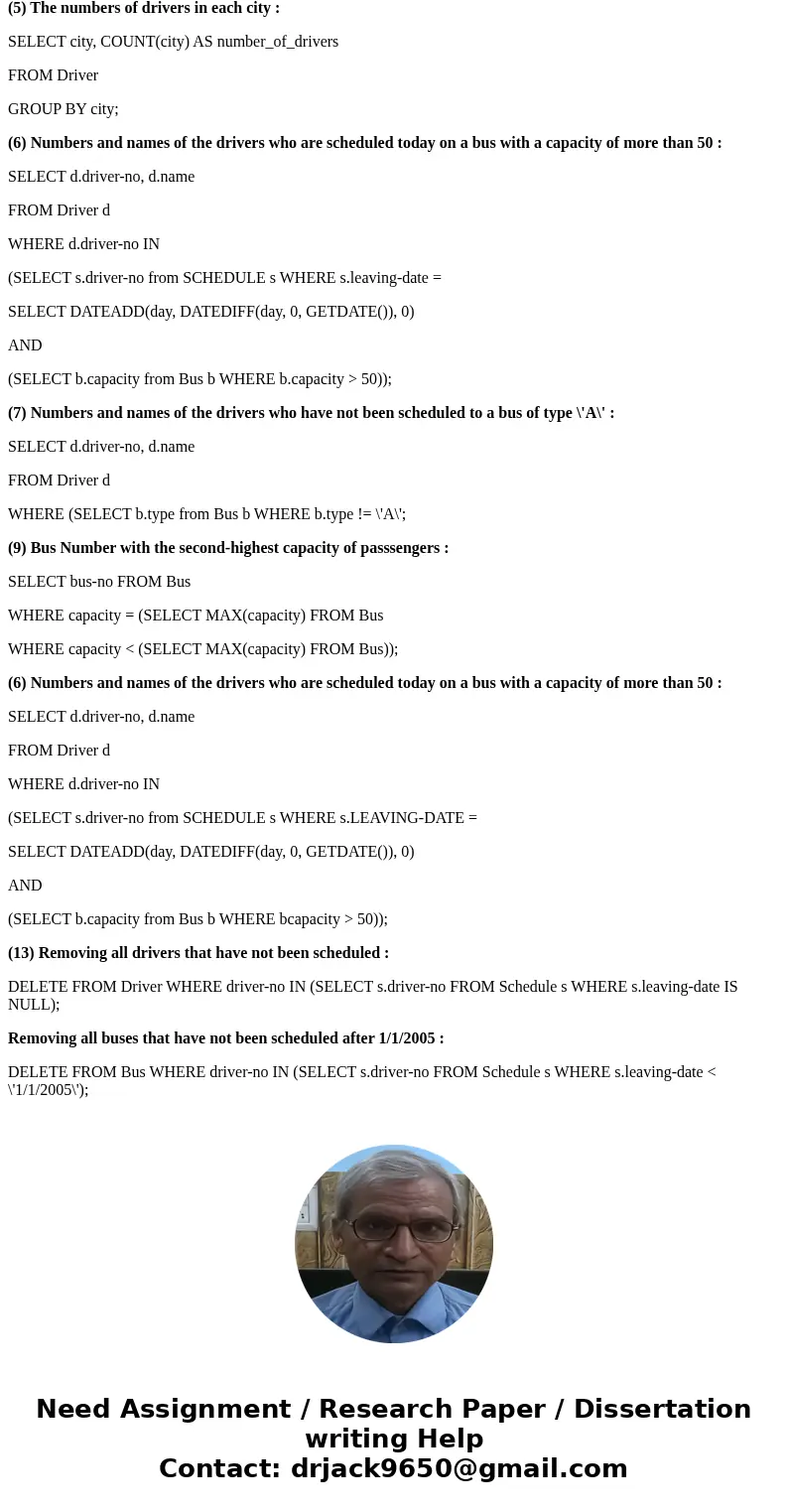Given the following database of a Bus company The underlined
Solution
(1) Adding the color field to the Bus Table :
(2) Adding the constraint for possible values of Bus Types :
(3) Assigning the color Blue to all Buses of type A :
UPDATE Bus
SET color=\'Blue\'
WHERE type=\'A\';
(4) Total Bus Capacity of the company :
SELECT SUM(capacity) AS Total_Bus_Capacity FROM Bus;
(5) The numbers of drivers in each city :
SELECT city, COUNT(city) AS number_of_drivers
FROM Driver
GROUP BY city;
(6) Numbers and names of the drivers who are scheduled today on a bus with a capacity of more than 50 :
SELECT d.driver-no, d.name
FROM Driver d
WHERE d.driver-no IN
(SELECT s.driver-no from SCHEDULE s WHERE s.leaving-date =
SELECT DATEADD(day, DATEDIFF(day, 0, GETDATE()), 0)
AND
(SELECT b.capacity from Bus b WHERE b.capacity > 50));
(7) Numbers and names of the drivers who have not been scheduled to a bus of type \'A\' :
SELECT d.driver-no, d.name
FROM Driver d
WHERE (SELECT b.type from Bus b WHERE b.type != \'A\';
(9) Bus Number with the second-highest capacity of passsengers :
SELECT bus-no FROM Bus
WHERE capacity = (SELECT MAX(capacity) FROM Bus
WHERE capacity < (SELECT MAX(capacity) FROM Bus));
(6) Numbers and names of the drivers who are scheduled today on a bus with a capacity of more than 50 :
SELECT d.driver-no, d.name
FROM Driver d
WHERE d.driver-no IN
(SELECT s.driver-no from SCHEDULE s WHERE s.LEAVING-DATE =
SELECT DATEADD(day, DATEDIFF(day, 0, GETDATE()), 0)
AND
(SELECT b.capacity from Bus b WHERE bcapacity > 50));
(13) Removing all drivers that have not been scheduled :
DELETE FROM Driver WHERE driver-no IN (SELECT s.driver-no FROM Schedule s WHERE s.leaving-date IS NULL);
Removing all buses that have not been scheduled after 1/1/2005 :
DELETE FROM Bus WHERE driver-no IN (SELECT s.driver-no FROM Schedule s WHERE s.leaving-date < \'1/1/2005\');


 Homework Sourse
Homework Sourse